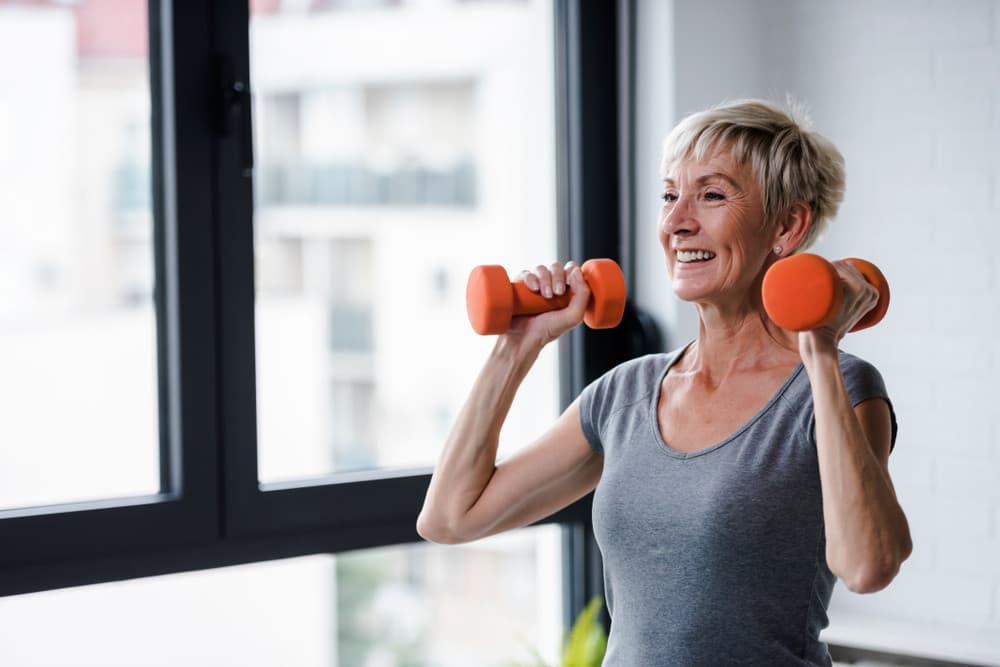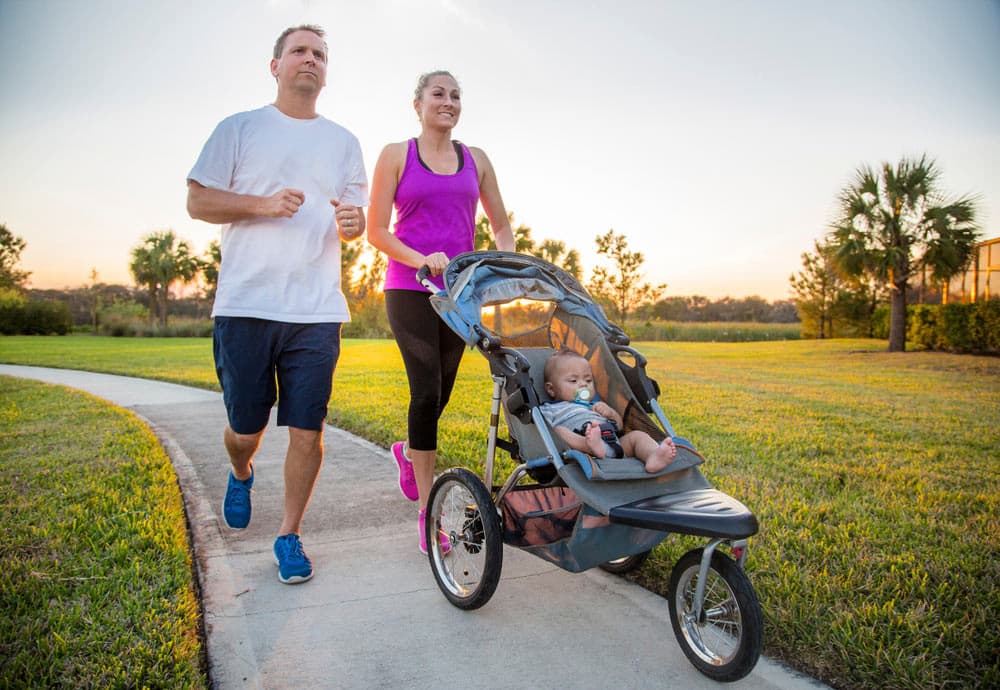Types of Exercise
Article by:
Amazing Discoveries™ |
10 min read
Is exercise important? Why should you make exercise a part of your everyday life?
Both aerobic and anaerobic exercise is greatly beneficial for your health. Regular exercise strengthens your heart, improves your circulation, boosts your energy, helps you sleep, and improves your mental wellbeing. People who exercise regularly are also at lower risk of developing chronic diseases such as heart disease or diabetes.
Want to get active but you’re not sure where to start? Keep reading to find out! But first, how will you benefit by incorporating more exercise into your life?
Benefits of Exercise
Exercise is great for your body, but in order to provide benefits, exercise should be progressive. Simply walking or jogging for a set amount of time each day won’t trigger drastic improvements, even long-term. Vary the types of exercise you do. As you get stronger, increase the duration and intensity of your exercise. Change your routine, even slightly, so you continue to get stronger and healthier rather than hitting a plateau.

13 Great Reasons to Exercise
1 |
Better agility. Once you begin exercising, performing other activities becomes much easier. |
2 |
Improved posture1 and profile. |
3 |
Stronger immunity. Moderate, sustained exercise can have a positive effect on the immune system.2 It reduces the risk of infectious diseases, can reduce cancer3 mortality rates and aids in detoxification and body purity.
|
4 |
Fights depression4 and relieves anxiety5 and stress.6 |
5 |
Better sleep. Less sleep is required for regeneration of nerve energy. |
6 |
Enhances circulation, which in turn improves memory and mental ability. |
7 |
Weight management. Aids in reaching and maintaining8 proper weight. Exercise burns calories, builds muscle, and increases the metabolism. |
8 |
Provides social benefits. People who exercise tend to be more poised and have more stable emotions. Exercise can also provide a way to connect with or make new friends. |
9 |
Osteoarthritis symptoms. Decreases the pain and stiffness of osteoarthritis9 by delivering blood to the joints. It also helps in healing the body more quickly. |
10 |
Protects against heart disease by strengthening10 the heart, decreasing blood pressure, and heart rate, and lowering LDL (bad) cholesterol while raising HDL (good) cholesterol.11 |
11 |
Increases energy levels, making us more efficient and productive in all that we do. |
12 |
Strengthens12 the bones, helping them retain calcium and other minerals, thus aiding in the prevention of osteoporosis. |
13 |
Helps with diabetes. Exercise can lower blood glucose, even in diabetic persons.13 |
Types of Exercise: Aerobic and Anaerobic Exercise
There are two different types of exercise - aerobic and anaerobic. Aerobic exercise is sustained movement that gets your heart working and requires an increased intake of oxygen. Running, cycling, and swimming are all aerobic exercises. Walking can also be a form of aerobic exercise, if you’re walking for exercise, not just going for a stroll. Aerobic exercise is often referred to as “cardio” because it’s great for your heart.

Anaerobic exercise is performed in short, intense bursts. Compared to aerobic exercise, which requires oxygen to sustain your movements, anaerobic exercise utilizes the glucose stored in your body to fuel fast-paced or high-intensity activities.15 Anaerobic exercises include things like strength training, weight lifting and sprinting. Anaerobic exercise is especially good for strengthening muscle and bone. If you’re looking to lose weight, anaerobic exercise can help you achieve and maintain your ideal weight.16 Anaerobic exercise builds muscle; when you have more muscle, you burn more fat.17 In addition, anaerobic exercise magnifies a phenomenon known as excess post-exercise oxygen consumption which forces your body to continue to burn fat18 after exercise.
Both types of exercise are important for optimal health as both aerobic and anaerobic exercise are great for getting in shape, weight loss, and improving your physical condition.

Because each of the different types of exercise has specific benefits, you can choose what’s best for you and your physical condition. One type of exercise may be more beneficial or accessible for certain individuals. For example, a study found that patients with rheumatoid arthritis can benefit from progressive resistance training. Patients involved were able to increase their strength and reduce pain and fatigue without increasing discomfort.19
Some people may try to avoid strength or resistance training or exercises involving weights because they’re afraid to become too muscular. The notion that strength training will make you excessively muscular is a misconception. For the average person, including some weight training in your exercise routine will help tone your skin and muscles without giving you the physique of a hard-core body builder. Strength training will help improve your appearance, giving you a healthy look, while also benefiting your body. If you’re not sure where to start, working on strengthening your core muscles20 is a great way to ease into strength training. Having a strong core will drastically improve your quality of life. Remember to start slow and consult a professional to be certain strength training is right for you.

Just like having a colorful plate at mealtime is important, most people will benefit from a varied exercise routine that includes both aerobic exercise such as jogging or brisk walking, and anaerobic exercise such as weightlifting. Doing only one type of exercise will yield moderate, less dramatic health benefits.
Overview of HIIT for Beginners
High intensity interval training (HIIT) is a type of exercise that can be extremely beneficial if implemented correctly. HIIT consists of a workout that begins with moderate exercise as a warm up. It then alternates short bursts of high-demand exercise like hard cycling or very fast running with rest periods such as slower jogging or walking. This pattern is repeated a set number of times, followed by a cool down period of moderate exercise. The high-intensity portions of HIIT aim for 80-95 or 100% of maximum heart rate.21

A common HIIT ratio is 1:1,22 where you have the same amount of rest time as training time (for example, sixty seconds of intense exercise with sixty seconds of rest). However, the ratios can vary. Starting out, you might do 1:2, where you exercise intensely for sixty seconds and rest for 120 seconds. As your strength and endurance increase, you can sustain longer periods of intense exercise with shorter periods of rest.
Because HIIT focuses on high-intensity exercise during a short amount of time, it can be beneficial for persons who feel they don’t have time for regular exercise. Regular moderate exercise is good, but HIIT can have even greater benefits.23 When done safely and correctly, HIIT can even be beneficial for high-functioning heart disease patients.24 However, HIIT may not be ideal for some individuals such as pregnant women or people with certain health concerns. Check with your licensed healthcare practitioner to see whether HIIT is right for you.
Benefits of Walking
Brisk walking is one of the best forms of exercise. It is accessible to anyone, even people who can’t go to the gym or who don’t have space for indoor exercise. Regularly walking for exercise can help your immune system function better,25 help with weight management, and may even aid in the prevention of heart disease.26

- Walking for exercise uses nearly all of the body's 206 bones and 604 muscles.
- Almost anyone can do it.
- It does not require any expensive equipment.
- It is easy on the joints.
- The pace is easy to adjust.
- It can be done anywhere—from shopping malls to the great outdoors.
- You can get fresh air and sunshine at the same time if you are walking outside.
- Walking lends itself to socializing. Make walking fun by including family, friends, or your dog. However, don’t let the inclusion of friends or family reduce the impact of your walk. Remember that for walking to be exercise it must be brisk.
Get Started!
Establishing an exercise routine doesn’t have to be complicated or expensive. Most exercise can be done at home, even if you don’t have exercise equipment or a lot of space. If you’re feeling stumped, or are an exercise newbie, check out Darebee for examples and workout ideas.
Related Articles
These statements have not been evaluated by the Food and Drug Administration or Health Canada. Our articles, videos and products are not intended to diagnose, treat, cure, or prevent any disease. If you are pregnant, nursing, taking medication, or have a medical condition, consult your physician before following any recommendations or using any product on our site. You assume sole responsibility for your personal health, and you must use your own discretion under doctor consultation to determine whether any product or recommendation on this site is suitable for your personal situation.



